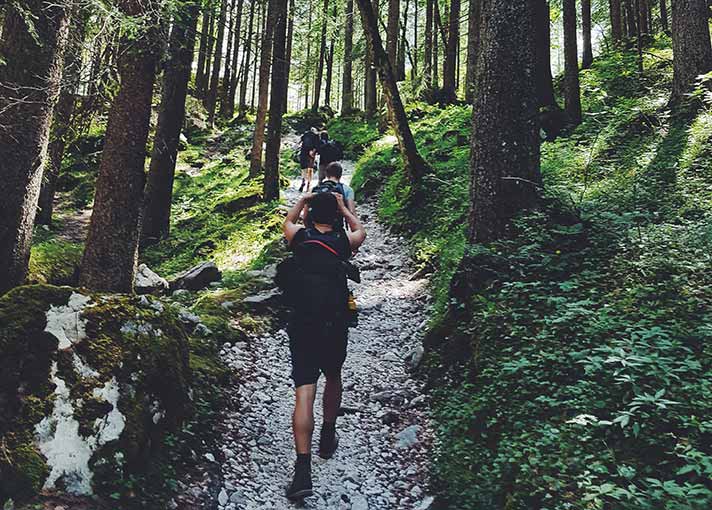Submitted for May 2020 issue
The current state of global affairs has left me pondering opposing forces. Here we spend our days in our bubbles, isolating our physical selves for the sake of everyone’s well-being, while yearning for normal intercourse with others. The human need to be social is counteracted by a need for ‘alone time’, a time for meditation or contemplation. To be forced away from human interaction skews this sensitive balance, and creates anxiety. Thus the paradox: we desire to be with others and we desire to be out and about, interacting with our world, yet in this crisis we find these two desires to be mutually exclusive.
The busy trails in those areas still open for exercise and ‘nature bathing’ naturally attract more visitors at a time when fewer visitors would be more prudent. We can’t deny folks’s need for wild places, for wilderness; Edward Abbey wrote that a society without wilderness can hardly call itself civilized. So it takes no great leap of understanding to see many of our favorite quiet contemplative places suddenly overrun with strangers. And it takes no great dose of common sense to do our part for physical distancing until this crisis is safely behind us.
As I write this correspondence, we have no idea when that will be. For many who don’t suffer the ravages of this novel virus, the throes of ‘cabin fever’ will make the need for protecting ourselves and others seem far worse than the probability of infection. Our world is turned on its ear and we seek some sense of the distance we still have to travel. We truly have to be our brother’s keeper and over-sized egos are not helpful. Indeed, in these times, the teachings about ‘a few rotten apples’ spoiling everything become more applicable.
So here we have opposing forces in how we deal with the need for physical distancing. But this same behavior is applicable in how we treat our resources. Contemplate your actions when out on the trails. Be in a state of mindfulness about your interactions not just with others, but with the environment as well. With a higher volume of visitation, our trail infrastructure will feel the added burden of more feet and more bicycle tires.
Maintenance crews strive to hold trails on steep hillsides with respect for as many living forest denizens as possible. Gravity is the opposing force that brings these trails to the canyon bottoms, especially when careless users (yes, careless, as in ‘I couldn’t care less about my actions’) are unable or unwilling to maintain a standard of trail etiquette necessary to protect this resource. Maintain physical distancing, travel in the center of the trail to protect the edges, leave brush and limbs placed to protect sensitive areas alone, don’t cut corners—especially switchbacks, respect all signage, and do not cut trailside trees that protect the trailbed and backcuts. (If a particular tree is an obstacle, contact Public Works and crews can evaluate the situation).
May this crisis have a silver lining in that we learn to be more mindful of our place in this beautiful world.

 Trail Talk is a monthly column by Clayton Gillette about hiking the Jacksonville Woodlands trail system. For more information, please visit the Jacksonville Woodlands Association website at
Trail Talk is a monthly column by Clayton Gillette about hiking the Jacksonville Woodlands trail system. For more information, please visit the Jacksonville Woodlands Association website at
And, please leave the wildflowers for others to enjoy!
This hits home for me. A message to all to slow down and think outside yourself. Wherever you find yourself, you effect where you walk, where you act and what you think. Slow down the pace and be an observer, appreciate where you are and what others have done so you can enjoy this moment you find yourself in. Be it on the trail, or in the grocery store, it has always been more about you.